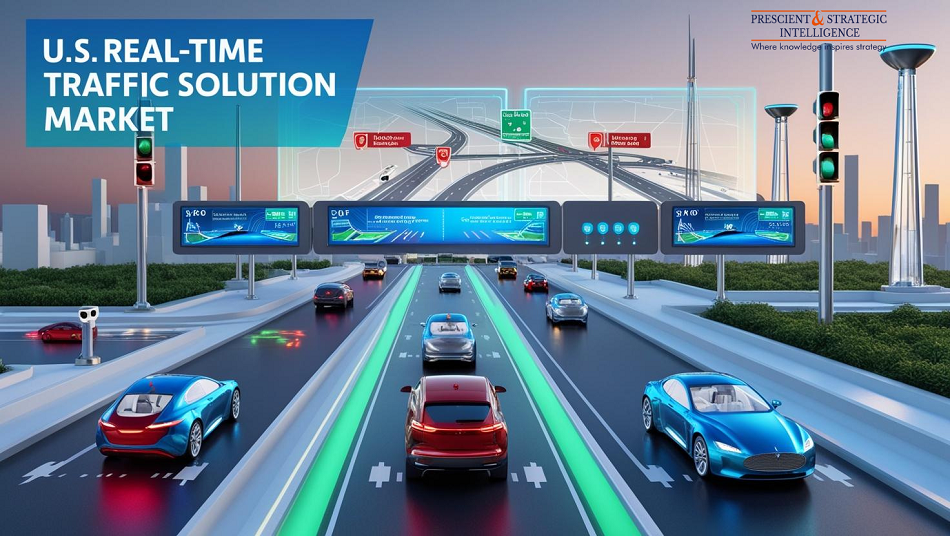The U.S. real-time traffic solution market is undergoing a transformative phase, driven by rapid urbanization, technological advancements, and a growing emphasis on sustainable urban mobility. As cities expand and the number of vehicles on the road increases, the need for efficient traffic management systems has become more pressing than ever.
The Imperative for Real-Time Traffic Solutions
Urban areas across the United States are grappling with escalating traffic congestion, leading to longer commute times, increased fuel consumption, and heightened greenhouse gas emissions. Traditional traffic management systems, often reliant on static signal timings and manual interventions, are proving inadequate in addressing the dynamic nature of modern traffic flows. This has paved the way for the adoption of real-time traffic solutions that leverage cutting-edge technologies to monitor, analyze, and manage traffic in real-time.
Technological Innovations Driving the Market
The integration of advanced technologies is at the heart of the evolution in traffic management. Artificial Intelligence (AI) and Machine Learning (ML) algorithms are being employed to predict traffic patterns and optimize signal timings dynamically. These systems can adapt to real-time conditions, such as accidents or roadworks, ensuring smoother traffic flow and reduced congestion.
Moreover, the deployment of Internet of Things (IoT) devices, including sensors and cameras, enables continuous monitoring of traffic conditions. These devices collect vast amounts of data, which, when analyzed, provide actionable insights for traffic management authorities. The result is a more responsive and efficient traffic system that can adapt to changing conditions on the fly.
Enhancing Emergency Response and Public Safety
Real-time traffic solutions are not only improving daily commutes but also playing a crucial role in emergency response. Advanced systems can detect the approach of emergency vehicles and adjust traffic signals accordingly, providing a clear path and reducing response times. This capability is vital in life-threatening situations where every second counts.
Additionally, these systems contribute to public safety by identifying and responding to traffic incidents promptly. Real-time alerts can be sent to drivers, informing them of accidents, road closures, or hazardous conditions ahead, allowing them to make informed decisions and avoid potential dangers.
Government Initiatives and Smart City Integration
Federal and local governments are recognizing the benefits of real-time traffic solutions and are investing in their development and deployment. Initiatives aimed at building smart cities are incorporating intelligent traffic management systems as a core component. These systems are being integrated with other urban infrastructure, such as public transportation and emergency services, to create a cohesive and efficient urban mobility ecosystem.





Comments